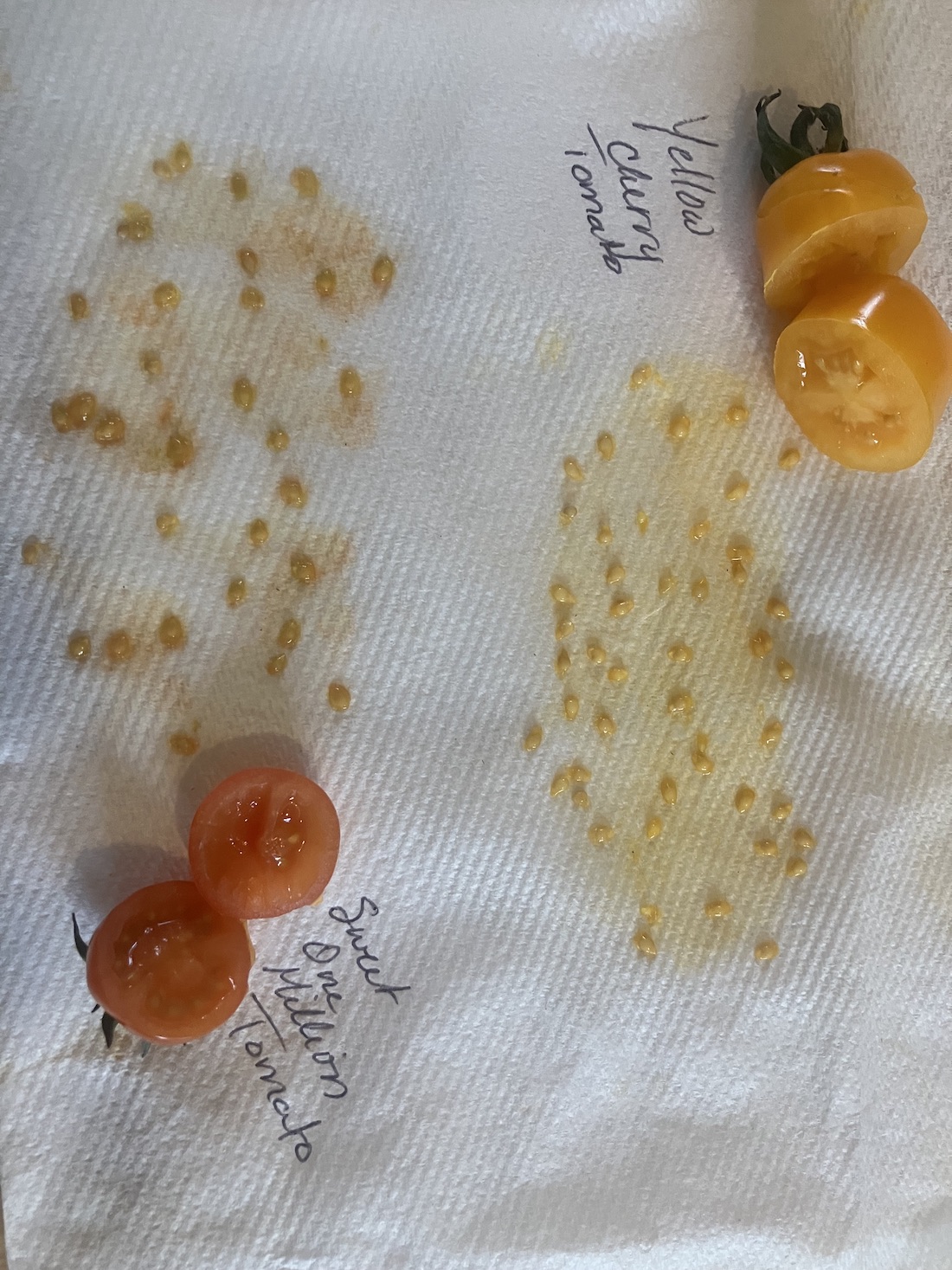Saving seeds: Growing sustainability in your own garden
April 15, 2025

There is a great sense of continuity and sustainability in saving seeds from your own garden, and it is a great way to reduce one of your biggest garden expenses. There’s a community of people who like to collect and share seeds and preserve heirloom varieties, and there are more and more seed giveaway events like ‘Seedy Sundays’ happening each year across the province.
Blossoms, if left unpicked, will typically producea fruit, or a husk, or a seed-head of some sort, and when they ripen, or become brown and brittle, one can collect the seeds inside. Not all plants on the market produce viable seeds, so in some cases plants are easier to take cuttings from.
Some garden plants will just self-seed – their seeds fall to the ground, survive the winter, and come back on their own. But I often collect a few of these seeds just in case. Pansies, cosmos, calendula, brown-eyed Susan, ladies’ mantle, violets, lupins, hollyhocks, and foxgloves usually reappear, if the soil isn’t disturbed too much. You’ll get to know which ones can do this by simply watching for little seedlings nearby.
Annual herbs like dill and coriander will seed themselves, but most vegetable seeds can’t survive the winter outside. Vegetables that are technically fruits (seed bearing), like tomato, pepper, cucumber and squash, can be allowed to fully ripen, or over- ripen in the case of beans and cucumbers, in order to collect their seeds.
Root crops are usually biennial, and if we don’t harvest them, they will send up a flower head and go to seed in their second year. So, leaving a few carrot, turnip, or beet to overwinter will allow you to harvest their seeds the following year.
It is important to start with the right seeds. The plants that are naturally pollinated by bees or the wind are ‘open pollinated’, and this is often written on the seed package. When you grow these seeds, they will be quite similar to the parent plants, because they were produced in controlled conditions, where the only pollen present was from similar plants.
Choose open pollinated seeds, and when you plant these seeds, you will also want to make sure that other varieties of that same crop are not nearby. If bees travel from plant to plant, they will carry pollen between two varieties and will cross-pollinate. The seeds that result from these cross-pollinations will have a combination of traits of both parents.
So, if you’re saving seeds, the climbing cherry tomato should be planted away from the beefsteak, so that you’ll know that the shape of plant, and style and flavour of the fruit will be similar to the plant you collected the seeds from. This would apply to any open pollinated varieties of cucumber, beans, or peas that you’d like to collect seeds from.
Fruit quality and disease resistance will vary a little from plant to plant, so make a point of collecting seeds from the healthiest plants, with the best fruits. Over the years, you will have ‘selected’ a seed that has adapted somewhat to your very own conditions.
‘Heirloom’ varieties have been created in this way by people saving seeds from plants with traits like excellent flavour and disease resistance. These traits might be lost in some of the newer varieties that have been bred for uniform shape, or appealing colour.
‘Hybrid’ seeds are the result of combining two different varieties of a crop and wouldn’t be recommended for the beginner seed saver. These seeds will produce the desired crop, but the seeds that come from that crop might not be viable, and certainly couldn’t be relied upon to produce similar fruit again.
If you’ve got the time and space to experiment, you can always roll the dice and collect seeds from hybrids, or just place two different varieties of the same crop side by side and see what kind of unique fruit comes from the seeds they produce. After all, that’s how new varieties are developed.
Because you can never be entirely certain of what you are starting with, or what nature will do with it, it is a good practice to avoid seeding your whole crop in collected seeds, until you’ve had a bit of experience. One errant plant is not a problem, but a whole crop is.
Whatever seeds you collect, it’s important that they’re reasonably clean and very dry. I like to collect seeds into used envelopes. I label them (include the year), and leave them open for a week or so, to make sure they are good and dry. At that point, they can be stored away in a cool dark place.
It is definitely worth the peace-of-mind to test saved seeds ahead of the planting season. I either plant a few seeds in a small pot, or place them between layers of paper towel, kept moist, but aerated, in an unsealed plastic bag. They are good to go if they sprout in the expected time, which can really vary (carrots can take up to three weeks!)
Happy Gardening!


Caroline Cameron lives in Strathlorne, and offers gardening and guiding services around Cape Breton Island. Please submit any gardening tips, questions, and news to strathlorne@gmail.com and visit Facebook at Nature/Nurture Gardening & Hiking.